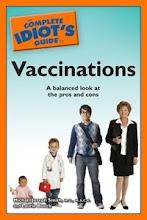Part of the problem is that flu vaccination recommendations have changed substantially over the past few years. In 2010-2011, for the first time ever, the flu vaccine is recommended for everyone 6 months or older (anyone can have the flu shot, containing killed flu viruses; the flu nasal spray contains inactivated (modified) live flu viruses and is recommended for a smaller subset of people).
In 2009, the CDC recommended the seasonal flu vaccine only for children ages 6 months to 18 years, and adults ages 50 and over (with some exceptions for certain younger adults). In 2008, the flu vaccine was only recommended for children ages 6 months to 5 years old and adults 50 and over (with some exceptions).
The viruses that cause the flu are constantly mutating, and in response a new flu vaccine has to be developed each year, at least until researchers figure out how to make a universal flu vaccine that can provide long-term protection. Researchers make an educated guess about which three flu viruses will cause the most damage in the future, then modify the viruses to use them in vaccines by growing them, usually in chicken eggs, a time-consuming process. If a different flu virus spreads, the vaccine won't protect against it.
The WebMD article pointed out CDC focus group research that found that many people are not happy with the universal flu vaccination recommendations. Catching the flu is not a big deal to many people, but it can have serious consequences for some. On average, about 36,000 people die from flu complications each year, primarily the elderly. In 2009, about 12,000 Americans died from complications of swine flu, mostly those under age 65, according to the CDC.
The flu vaccinations recommendations have changed over the years to protect a wider range of people, and also to keep healthier people from catching and passing on the flu to others. It might be inconvenient to get flu vaccinations for the whole family, but it's still a good idea.
Resources:
- The CDC's 2010-2011 Vaccine Information Sheets contain information about both the flu shot and the flu nasal spray.
- Prevent the spread of disease by washing your hands when needed. The Mayo Clinic tells you when and how to wash your hands.



